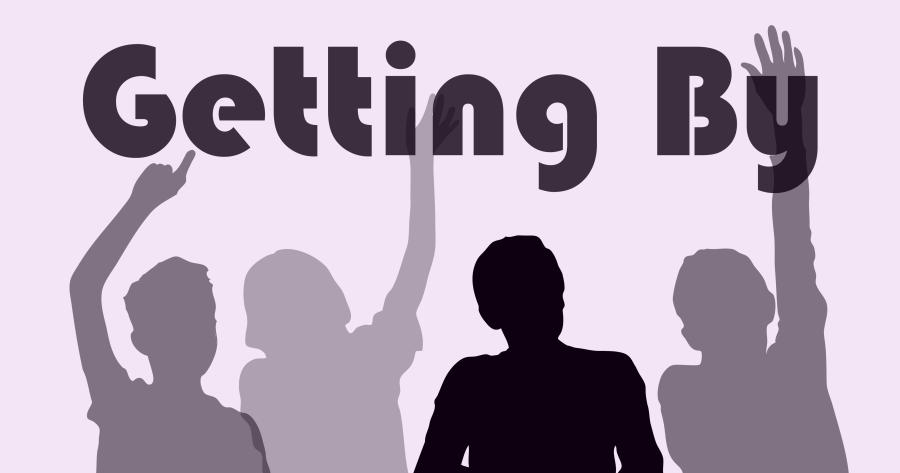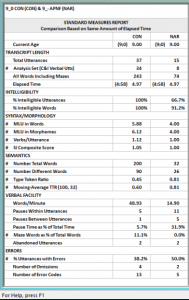
Getting By: How language sample analysis can reveal the challenges of language in the classroom

Getting By: How language sample analysis can reveal the challenges of language in the classroom
Published at: 2018-04-30
Another evaluation! Starting an evaluation can be a daunting task. You may have a vague idea of the language deficits of the student being referred; for example, you may have been told that the student offers minimal information during classroom discussions. He or she may be described as “getting by” in the classroom. As part of a comprehensive assessment, particularly where spoken language is concerned, language sampling can be essential in pinpointing specific areas of challenge, as well as relative strengths, when it comes to expressive language skills. This post will compare two types of language samples - conversational and narrative - and help demonstrate the relative advantages of each. In addition to standardized testing required for qualification (and part and parcel to the process), you may want to start by eliciting a conversational language sample. In general, conversational language mirrors casual conversations the student might have with parents or friends. These samples place the least amount of linguistic pressure on a speaker and can serve as a great way to establish rapport and get to know the student who is being evaluated. Perhaps the conversational sample went pretty well. Maybe you only had to ask for clarification a couple of times. Possibly the student isn’t doing so badly after all! But how does the student perform when there are heavier communication demands like those that we see within the classroom? Narrative samples can shed light here. They tap into the more academic language required for classroom/academic success. Typically, narrative samples contain more language with more complex syntax, and more diverse vocabulary. In addition, the organizational demands are higher. The pressure to produce these samples is greater on the spoken language system. Let’s take a look at one student’s conversational and narrative story retell (A Porcupine Named Fluffy, by Helen Lester) language samples. Using SALT, we can compare these two samples to gain valuable insight on why the student seems to do fine in conversations but is only just “getting by” in the classroom. This 9-year-old student completed a conversational language sample and a narrative retell that were compared based on the same amount of elapsed time. For a fair comparison, samples should be equated in length, either by same amount of time, or same number of words or utterances. This way the opportunity for occurrence is fair. For example, in each sample there is the same opportunity to speak more and different words or to make more errors. In this particular case, time was used to equate the samples because there were so few utterances in the story retell.  In this student’s case, nearly all critical language measures were weaker in the narrative retell sample than in the conversational sample. 1. The student’s mean length of utterance was 6.12 (in morphemes) in the conversational sample and only 4.0 in the narrative sample. 2. Measures of vocabulary diversity (total words and number of different words) were significantly lower in the narrative retell. 3. Syntax and semantic skills appear to be challenged in the narrative retell. 4. Verbal facility skills were weaker in the narrative as characterized by a very slow speaking rate and an increased number of pauses. This student did not present as significantly language impaired during the conversational sample. There were word level errors, but the overall mean length of utterance and number of words/different words did not appear overly concerning - the student was “getting by.” In contrast, the student’s performance on the narrative revealed substantial deficits in syntax, semantics, and in verbal fluency. How would this student’s oral language look in the classroom? Would the student be able to use academic vocabulary in a meaningful way, explain concepts taught in class, and participate in group discussions about something just read? Most likely not. We should note that not all students will do better at conversation than narration. For example, a student on the autism spectrum may excel at narration but struggle with conversation which requires social reciprocity. But that’s a topic for another post…
In this student’s case, nearly all critical language measures were weaker in the narrative retell sample than in the conversational sample. 1. The student’s mean length of utterance was 6.12 (in morphemes) in the conversational sample and only 4.0 in the narrative sample. 2. Measures of vocabulary diversity (total words and number of different words) were significantly lower in the narrative retell. 3. Syntax and semantic skills appear to be challenged in the narrative retell. 4. Verbal facility skills were weaker in the narrative as characterized by a very slow speaking rate and an increased number of pauses. This student did not present as significantly language impaired during the conversational sample. There were word level errors, but the overall mean length of utterance and number of words/different words did not appear overly concerning - the student was “getting by.” In contrast, the student’s performance on the narrative revealed substantial deficits in syntax, semantics, and in verbal fluency. How would this student’s oral language look in the classroom? Would the student be able to use academic vocabulary in a meaningful way, explain concepts taught in class, and participate in group discussions about something just read? Most likely not. We should note that not all students will do better at conversation than narration. For example, a student on the autism spectrum may excel at narration but struggle with conversation which requires social reciprocity. But that’s a topic for another post…
No Comments yet. Be the first to comment.